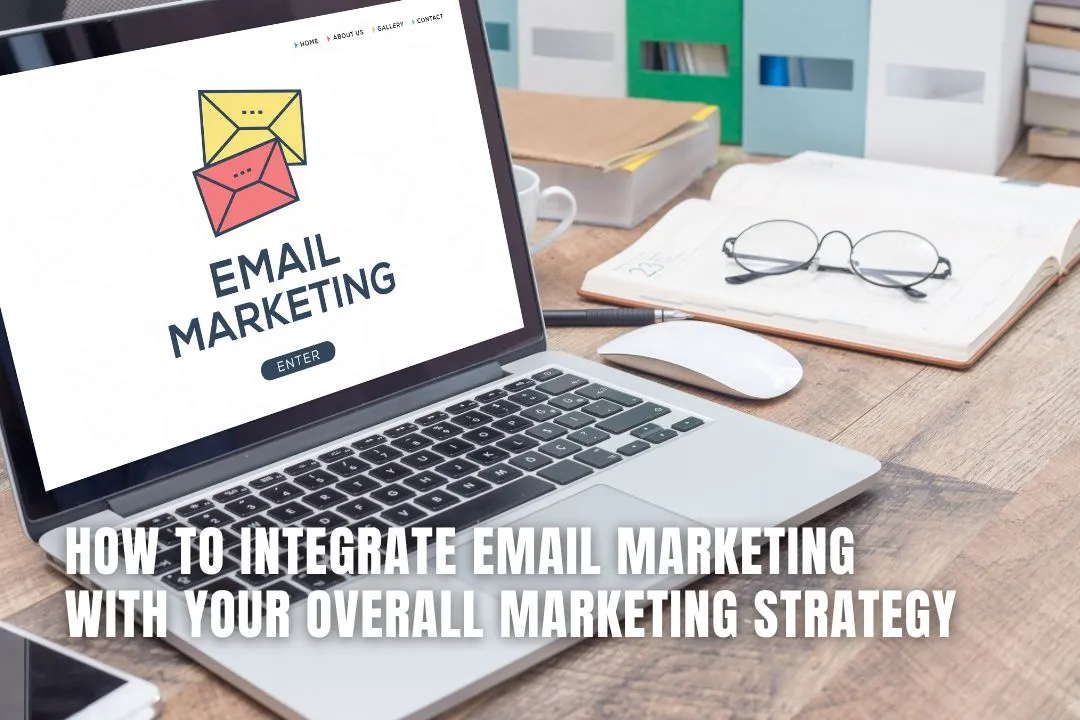
In today’s fast-paced digital world, businesses rely on efficient email marketing to connect with their audiences. However, email campaigns are just one piece of a larger puzzle. When integrated with other parts of your marketing strategy, they can help you reach more people and create a stronger impact. This post will explore how businesses can align email marketing with their broader efforts to create a seamless, customer-focused approach that brings them closer to their audience.
Email marketing acts as a direct connection to potential and existing customers. E-mail is much more personal than social media or search engine marketing, as you put your content in front of readers based on their preferences. Understanding the benefits this tool has to offer, businesses are able to utilise this resource to enhance other marketing efforts and create a cohesive message across all channels. Using email marketing tools can help businesses reach their goals.
Successful email integration begins by aligning your email marketing goals with broader business objectives. A strong strategy needs clear, measurable targets—like boosting sales, increasing brand visibility, or driving engagement—so campaigns deliver real value. This alignment also supports consistent messaging, helping reinforce your brand identity while contributing to your overall marketing strategy.
Audience segmentation is key to delivering relevant content. By segmenting an email list into groups based on demographics, preferences, or past interactions, marketers can tailor messages to meet specific needs. This approach boosts open and click-through rates while increasing customer loyalty, as businesses demonstrate a deep understanding of individual interests. By targeting customers more effectively, brands can create stronger connections and improve overall engagement.
Content is still important, and you need to create attractive email content to attract subscribers. Tips like good subjects, greetings, and body content can make a big difference in any email campaign's performance. Clear call-to-actions encourage readers to engage, leading traffic to websites or encouraging certain kinds of actions. The use of images and videos can also improve engagement levels, making emails more attractive to recipients.
Automating email marketing processes ensures messages are sent at the right time without constant human input. Automated workflows allow businesses to send welcome emails, follow-up messages, or promotional offers based on specific triggers or a set timeline. This not only saves time but also ensures consistent communication, ultimately enhancing the customer experience.
As more users check their email on their phones, mobile-friendliness is a must. Design emails to be responsive so that they look good on any screen or display size. Tools test how it looks and functions on various devices to ensure that messages appear professional and are simple to navigate when recipients access them.
Tracking the success of emails is an important part of email campaigns since it can help improve them over time. Metrics like open, click, and conversion rates serve as key performance indicators (KPIs) of what's working and what's not. These metrics allow businesses to make data-driven decisions to inform and refine future campaigns for improved outcomes.
An integrated e-mail marketing strategy means you need to intertwine the digital channels with traditional channels. It can be supported by social media and content marketing online (and even offline events). By using this, they have a greater chance of getting their messages across to a massive audience, reinforcing the brand and creating engagement. This could look like social media sharing of email content or sending out emails to promote physical events. This strategy provides a multi-channel approach that strengthens the impact.
Personalisation is more than just using the names of the recipients. Businesses can provide personalised recommendations or special offers when they understand customer behaviour and preferences. Such practice enhances relations because customers feel noticed and understood. Personalised communication enhances customer satisfaction in the long run, which naturally tends to result in increased loyalty and advocacy when satisfied customers spread the good word within their territories.
There are many benefits of integrating email marketing with an overall marketing strategy, such as improved customer engagement and higher brand awareness. But when you understand its function, how to align your goals, and how to leverage tools like automation and segmentation, you can implement campaigns that pack a punch. With trends come changes, and as a strategic discipline, as long as you are agile and sustain innovation, you will continue to be successful, which is why email happens to still be ground zero for anyone's comprehensive marketing strategy.